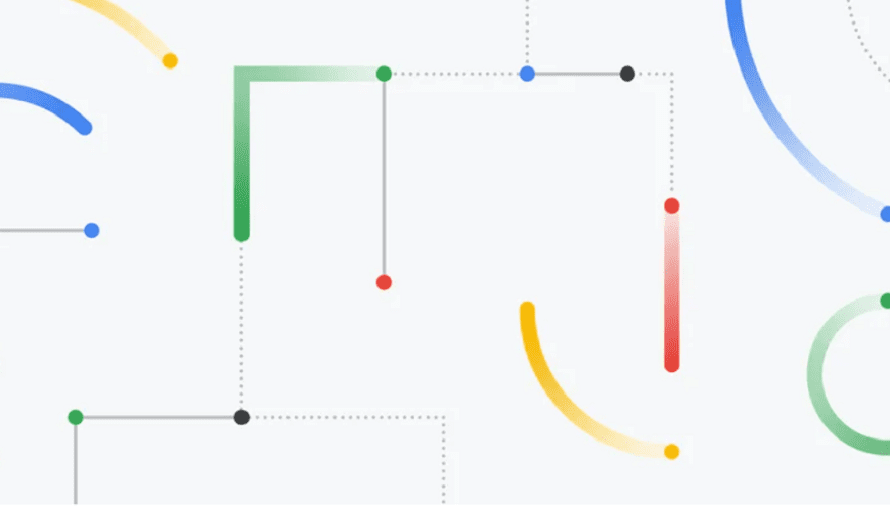Google Claims AI Chatbot Bard is Getting Better at Math and Programming
Google has announced that its AI-powered chatbot, Bard, is getting better at tasks and queries that rely on logic and reasoning. This is welcome news, as Google was a bit late to the generative AI party and its chatbot had seemingly been plagued with problems from the start.
Bard’s Improvements
Jack Krawczyk, Bard Product Lead and Amarnag Subramanya, VP of Engineering for Bard, explained how the chatbot “got better” in a blog post.
“Bard is getting better at math tasks, coding questions and string manipulation,” they write. This is due to a new technique called “implicit code execution”, which helps Bard detect computer prompts and execute code in the background. “This allows it to more accurately respond to math tasks, coding questions, and string manipulation prompts,” they claim.
The implicit code execution feature helps Bard do things like calculate interest accumulation, rearrange word spellings, and analyze prime numbers and factors.
Limitations of Large Language Models
Google employees note that large language models (LLMs) are like prediction machines. This means that when they are given a question, they generate an answer by predicting which words are likely to come next. This makes generative AI services “extremely proficient in language and creative tasks, but weaker in areas such as reasoning and math.”
That is now enhanced by the implicit code execution method, which allows Bard to generate and execute code to improve his reasoning and computational abilities.
Krawczyk and Subramanya say that with the new technique, Bard identifies prompts that could benefit from logic code, writes it “under the hood,” executes it, and uses the result to generate a more accurate answer.
They claim that the new method improves the accuracy of Bard’s answers to arithmetic word and math problems by about 30%.
Google’s AI-powered chatbot, Bard, has been making strides in the AI space. The tech giant has announced that Bard is getting better at tasks and queries that rely on logic and reasoning. This is due to a new technique called “implicit code execution”, which helps Bard detect computer prompts and execute code in the background.
The implicit code execution feature helps Bard do things like calculate interest accumulation, rearrange word spellings, and analyze prime numbers and factors. It also helps Bard generate and execute code to improve his reasoning and computational abilities.
Google employees note that large language models (LLMs) are like prediction machines. This means that when they are given a question, they generate an answer by predicting which words are likely to come next. This makes generative AI services “extremely proficient in language and creative tasks, but weaker in areas such as reasoning and math.”
Krawczyk and Subramanya say that with the new technique, Bard identifies prompts that could benefit from logic code, writes it “under the hood,” executes it, and uses the result to generate a more accurate answer. They claim that the new method improves the accuracy of Bard’s answers to arithmetic word and math problems by about 30%.
Google’s AI-powered chatbot, Bard, has come a long way since its inception. With the new implicit code execution feature, Bard is now better at tasks and queries that rely on logic and reasoning. This new feature helps Bard do things like calculate interest accumulation, rearrange word spellings, and analyze prime numbers and factors. It also helps Bard generate and execute code to improve his reasoning and computational abilities.
Google employees note that large language models (LLMs) are like prediction machines. This means that when they are given a question, they generate an answer by predicting which words are likely to come next. This makes generative AI services “extremely proficient in language and creative tasks, but weaker in areas such as reasoning and math.”
Krawczyk and Subramanya say that with the new technique, Bard identifies prompts that could benefit from logic code, writes it “under the hood,” executes it, and uses the result to generate a more accurate answer. They claim that the new method improves the accuracy of Bard’s answers to arithmetic word and math problems by about 30%.
Google’s AI-powered chatbot, Bard, has made great strides in the AI space. The tech giant has announced that Bard is getting better at tasks and queries that rely on logic and reasoning, thanks to its new implicit code execution feature. This feature helps Bard do things like calculate interest accumulation, rearrange word spellings, and analyze prime numbers and factors. It also helps Bard generate and execute code to improve his reasoning and computational abilities.
Google employees note that large language models (LLMs) are like prediction machines. This means that when they are given a question, they generate an answer by predicting which words are likely to come next. This makes generative AI services “extremely proficient in language and creative tasks, but weaker in areas such as reasoning and math.”
Krawczyk and Subramanya say that with the new technique, Bard identifies prompts that could benefit from logic code, writes it “under the hood,” executes it, and uses the result to generate a more accurate answer. They claim that the new method improves the accuracy of Bard’s answers to arithmetic word and math problems by about 30%.
Google’s AI-powered chatbot, Bard, has made great strides in the AI space. The tech giant has announced that Bard is getting better at tasks and queries that rely on logic and reasoning, thanks to its new implicit code execution feature. This feature helps Bard do things like calculate interest accumulation, rearrange word spellings, and analyze prime numbers and factors. It also helps Bard generate and execute code to improve his reasoning and computational abilities.
Krawczyk and Subramanya say that with the new technique, Bard identifies prompts that could benefit from logic code, writes it “under the hood,” executes it, and uses the result to generate a more accurate answer. They claim that the new method improves the accuracy of Bard’s answers to arithmetic word and math problems by about 30%.
Google’s AI-powered chatbot, Bard, has made great strides in the AI space. The tech giant has announced that Bard is getting better at tasks and queries that rely on logic and reasoning, thanks to its new implicit code execution feature. This feature helps Bard do things like calculate interest accumulation, rearrange word spellings, and analyze prime numbers and factors. It also helps Bard generate and execute code to improve his reasoning and computational abilities.
Krawczyk and Subramanya say that with the new technique, Bard identifies prompts that could benefit from logic code, writes it “under the hood,” executes it, and uses the result to generate a more accurate answer. They claim that the new method improves the accuracy of Bard’s answers to arithmetic word and math problems by about 30%.
Google’s AI-powered chatbot, Bard, has made great strides in the AI space. The tech giant has announced that Bard is getting better at tasks and queries that rely on logic and reasoning, thanks to its new implicit code execution feature. This feature helps Bard do things like calculate interest accumulation, rearrange word spellings, and analyze prime numbers and factors. It also helps Bard generate and execute code to improve his reasoning and computational abilities.
Krawczyk and Subramanya say that with the new technique, Bard identifies prompts that could benefit from logic code, writes it “under the hood,” executes it, and uses the result to generate a more accurate answer. They claim that the new method improves the accuracy of Bard’s answers to arithmetic word and math problems by about 30%.
Google’s AI-powered chatbot, Bard, has made great strides in the AI space. The tech giant has announced that Bard is getting better at tasks and queries that rely on logic and reasoning, thanks to its new implicit code execution feature. This feature helps Bard detect computer prompts and execute code in the background, allowing it to more accurately respond to math tasks, coding questions, and string manipulation prompts. It also helps Bard generate and execute code to improve his reasoning and computational abilities.
Google employees note that large language models (LLMs) are like prediction machines. This means that when they are given a question, they generate an answer by predicting which words are likely to come next. This makes generative AI services “extremely proficient in language and creative tasks, but weaker in areas such as reasoning and math.”
Krawczyk and Subramanya say that with the new technique, Bard identifies prompts that could benefit from logic code, writes it “under the hood,” executes it, and uses the result to generate a more accurate answer. They claim that the new method improves the accuracy of Bard’s answers to arithmetic word and math problems by about 30%.
Google’s AI-powered chatbot, Bard, has made great strides in the AI space. The tech giant has announced that Bard is getting better at tasks and queries that rely on logic and reasoning, thanks to its new implicit code execution feature. This feature helps Bard detect computer prompts and execute code in the background, allowing it to more accurately respond to math tasks, coding questions, and string manipulation prompts. It also helps Bard generate and execute code to improve his reasoning and computational abilities.
Krawczyk and Subramanya say that with the new technique, Bard identifies prompts that could benefit from logic code, writes it “under the hood,” executes it, and uses the result to generate a more accurate answer. They claim that the new method improves the accuracy of Bard’s answers to arithmetic word and math problems by about 30%.
Google’s AI-powered chatbot





